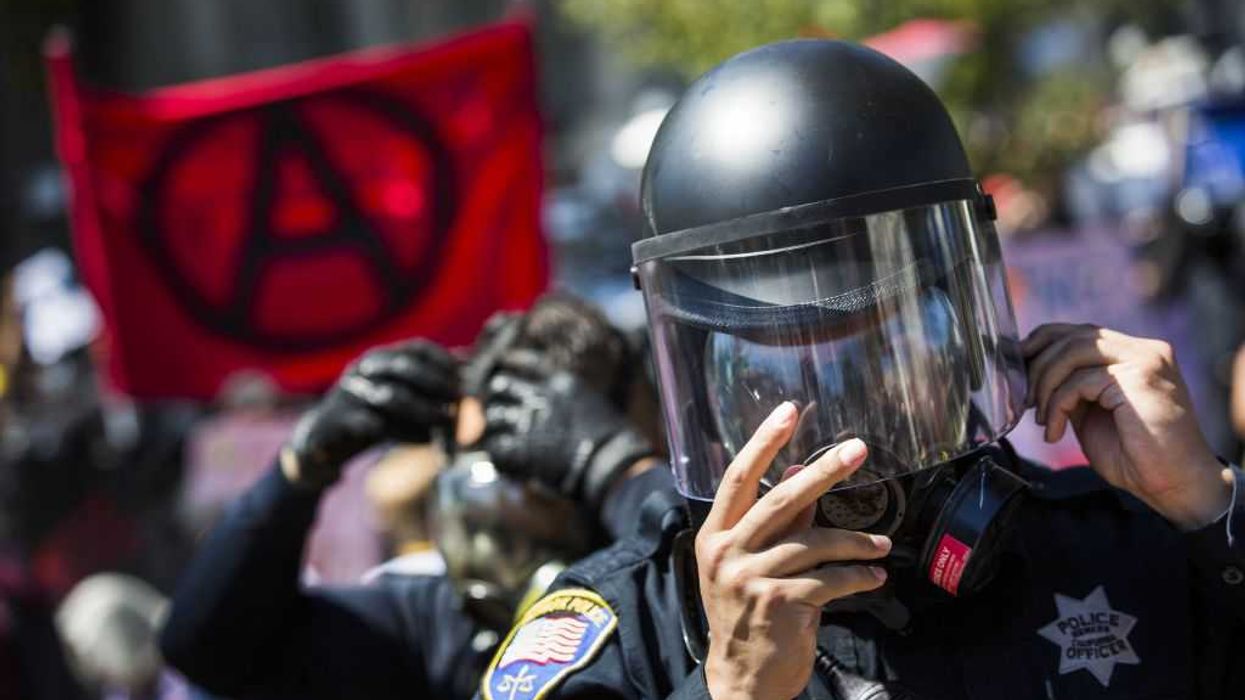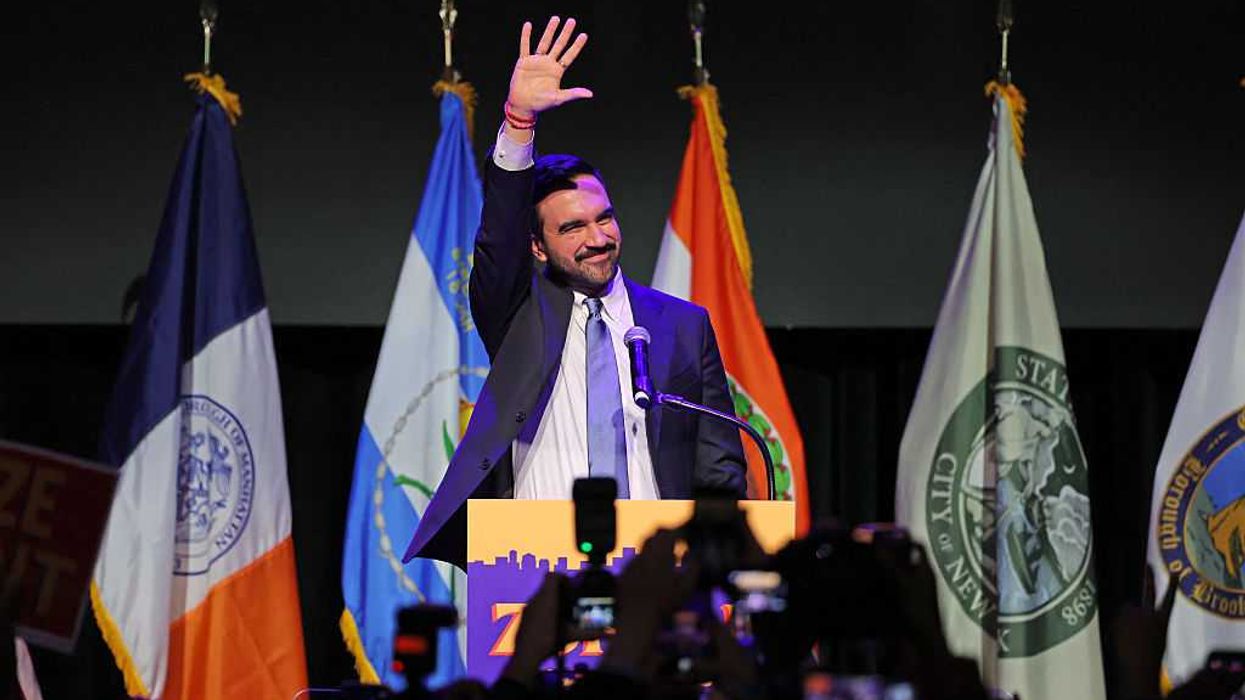Glenn wants to dive deep into different philosophical topics this year. As CRT and woke curricula are demonizing the "western tradition," it is vitally important that we preserve the tradition that gave birth our nation and gives context to the culture we live in today. Here are the top 11 books to give you a crash course in the western philosophic tradition. If you don't have the time to read them, you can find an overview to each of the books below!
1. Plato's Republic
The first titan of Greek philosophy, Plato articulated the set of questions that would drive the future western philosophical tradition. The pre-eminent question among Greek philosophers was "what is the thing that explains everything." In philosophical lingo, this question is framed as "what is the logos or the good." Plato argued that reality could be explained in terms of the "forms." For example, when you see multiple examples of a "courageous" act, then, Plato would argue, there is such a thing as "courage." The form of "the good" is the form that gives meaning to all of reality. Humans use their rational minds to contemplate what is good and then align their desires to "the good" in order to pursue it.
2. Aristotle's Nicomachean Ethics
The second titan of Greek philosophy was none other than Aristotle, who was a student of Plato. Aristotle deviated from his teacher's claims about "forms" and instead argued that every single thing has a purpose, a telos. For example, the telos of a chair is to provide a place for someone to sit. In the same way that a chair's purpose is to provide a place for someone to sit, Aristotle argues that the telos of human beings is to pursue happiness.
In the first page of the Nicomachean Ethics, Aristotle claims that every action is done for the sake of pursuing happiness, although, all too often, our actions are misplaced. We often pursue things we believe will make us happy when, in reality, they are fleeting, momentary pleasures that result in despair, heartbreak, or pain. Rather than conforming the world around us to fit our momentary desires, Aristotle argues that we achieve happiness by understanding the nature of the world around us and how we fit into it by actively cultivating virtues in order to make our soul "fit to be happy." Work and action, therefore, are not mere moral "to-do lists," but rather bring us fulfillment.
3. Augustine's City of God
If Plato is the first titan of ancient philosophy, then Augustine is the first titan of medieval philosophy. Medieval philosophy begins with the re-discovery of ancient philosophical texts that had been lost throughout the Roman Empire. As Christianity had taken root and spread across the western world, medieval philosophy integrated these newly-discovered texts into Christian theology. Augustine is the pre-eminent medieval Neo-platonic philosopher, incorporating Plato's philosophy into Christian theology.
Augustine claimed that God himself is the ultimate "form" or "the good" from which all of reality derives its meaning and existence. A thing is "good" insofar as it coalesces with the way God intended it to be. When a thing stays away from God's intention, it is "not good." From this, we get the Augustinian definition of "evil" as a "privation" or "absence of goodness," which ultimately corresponds to God's nature and character.
4. Aquinas' Summa Theologica
Just as Augustine incorporated Plato's philosophy into Christian theology, the second medieval titan, Thomas Aquinas, incorporated Aristotelian philosophy into Christian theology. Building from Aristotle, Aquinas argues that Christ is our happiness, the longing of every human heart and the object of every human action. Though we may think we are pursuing happiness outside of Christ, our this pursuit is misplaced and will result in fleeting pleasure and pain. True happiness and fulfillment, Aquinas argues, is found in Christ himself and the pursuit of his nature.
**Note: Aquinas' Summa is one of the largest works ever written and contains arguments about many different subjects--there are concise versions that will save you a lot of time!
5. Francis Bacon's Novem Organum
If medieval philosophy is defined by the incorporation of ancient philosophy into orthodox Christian theology, then the Enlightenment is defined as the rejection of both. English philosopher Francis Bacon kicked off the Enlightenment with a total rejection of the Aristotelian view of reality. The title of his book, the Novum Organum, or "the new order," is a deliberate tease of Aristotle's Organon, or "the order of things." Bacon's "new order" purports that, contrary to Aristotle, there is no inherent "nature" or "purpose" in reality. Rather, reality is something that we can conquer by means of knowledge and force, dissecting nature to its fundamental parts and reconstructing it into what we want. Bacon is considered the father of the scientific method, creating a testable means through which we can understand, break down and re-construct nature.
6. Descartes' Discourse on Method
Descartes is best known for his famous assertion, cogito ergo sum, or "I think, therefore, I am." In Discourse on Method, Descartes embarks on a rigorous endeavor to doubt anything that can be doubted. He postulates that all of reality can be doubted; however, the one thing that cannot be doubted, he concludes, is that there must be someone who is doubting. Though we may think that we are in the matrix, we are thinking, therefore, we must exist.
Descartes's rigorous skepticism introduced a brand-new burden of truth. In order for something to be true, it must be beyond all reasonable doubt. Many continue to use Descartes' skepticism as a way to challenge religious belief. According to these modern-day skeptics, unless you can prove that God exists beyond any reasonable doubt, there is no way to actually know whether he exists. The severing of knowledge and faith is often attributed to Descartes.
7. David Hume's Treatise on Human Nature
Scottish philosopher David Hume took aim at both Plato and Aristotle. One of his most famous and consequential claims about human nature is, "reason is and always ought to be slave of the passions." This took direct aim at Plato's view of human nature. Plato argued that our reason or "rationality" should always rule our passions so that we will desire what is good. Hume flips this on its head, claiming that our reason is helplessly enslaved to our passions and will inevitably justify what we will already want. From this, Hume introduced a new articulation of moral relativism, claiming that humans are not able to choose between what is good and what is evil, but rather will choose what they want over what they don't.
8. Kant's Contemplation on the Metaphysics of Morals
Hume's moral relativism sparked panic within German philosopher Immanuel Kant. If we will inevitably do what we desire, how can we ever choose to do something good and moral for its own sake? We must, according to Kant, separate morality completely from the passions if it's to be saved. Kant, therefore, argues that duty is the highest good that man can aspire to. We do the right thing, not because we want to--on the contrary, we do the "right thing" because it's our duty to do so, especially when we don't want to. This breaks away from the Aristotelian notion that our happiness is inextricably intertwined with the pursuit of "the good."
9. Nietzsche's Beyond Good and Evil
Nietzsche wasn't convinced by either Hume or Kant's efforts to retain some semblance of civility or relativistic moral standard. According to Nietzsche, if there is no such thing as transcendent morality, then "moral maxims" are reduced to meaningless words purported by the people in power. Morality, therefore, becomes a game of persuasion at best, coercion and force at worst. People are reduced to winners and losers, opressors and victims, and whoever comes out on top gets to impose their desired view of the world on the losers. Therefore, the goal of the individual is to cultivate the "will to power," to become the powerful "ubermensch" or "superhuman," or else you will be reduced to a victim susceptible to other people's coercion and oppression.
10. C.S. Lewis's The Abolition of Man
After the Enlightenment ends in a grand, destructive finale with Nietzsche, Christian philosophers in the 20th century attempt to pick up the pieces and resurrect the ancient and medieval philosophies that had been cast to the side. In The Abolition of Man, C.S. Lewis famously laments that mankind has become "men without chests." This is a direct reference to Plato's view of human nature--there is nothing linking our mind to our heart. Intellectually, we have dissected all of reality into its individual bits, stripping it of its holistic beauty, while also succumbing to our whims and passions with no notion of a transcendent moral law. Lewis calls for the re-marriage of our minds and our hearts, so that we will not only pursue what is good, but moreover, we will desire to do so.
11. Alasdair McIntyre's After Virtue
The latter part of the 20th century saw the resurgence of Aristotelian ethics after being largely dismissed over the past 400 years during the Enlightenment. Scottish Catholic philosopher Alasdair McIntyre was and continues to be one of the foremost leaders of this movement. In his magnum opus, After Virtue, McIntyre takes aim at the entire Enlightenment project itself and shows how it ultimately fails by its own standards. If reality is a mere power dynamic, as Nietzsche argues, and if morality is an act of persuasion and passion, as Hume purports, then we have no reason to take their views seriously. If all of reality is relative, then the statement "reality is relative" is itself relative. It becomes victim of the self-refutation of its own standards. Transcendent morality, he argues, must exist, because there must be some standard by which we judge reality and can say with determination, "this is good" and "this is evil."

 Anadolu / Contributor | Getty Images
Anadolu / Contributor | Getty Images
 Brandon Bell / Staff | Getty Images
Brandon Bell / Staff | Getty Images Europa Press News / Contributor | Getty Images
Europa Press News / Contributor | Getty Images ANGELA WEISS / Contributor | Getty Images
ANGELA WEISS / Contributor | Getty Images